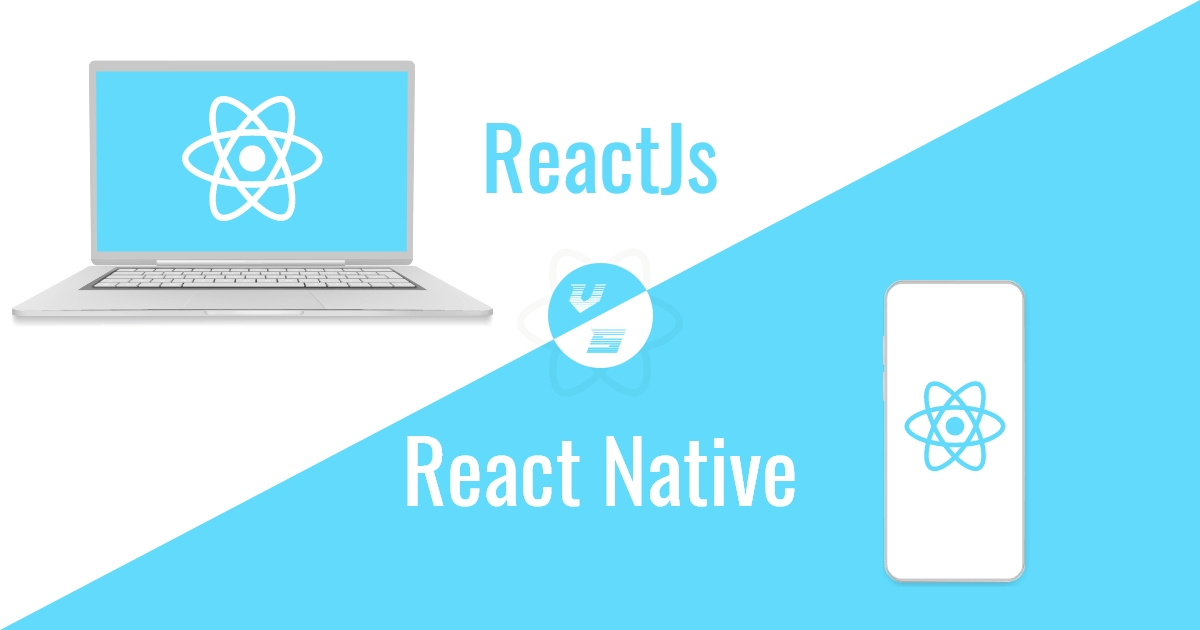When React Native arises in the narratives of folks who are accustomed to assessing things by how their names sound, a frequent yet incorrect assumption is “It’s simply React for mobile.” React and React Native are both software development tools, however it may be hard to tell them apart in most cases because of their similar names and common ancestry.
One technology aids in the creation of mobile apps, while another is valued by web developers. These areas vary in the same way that technologies do. When a corporation is faced with the decision of which technology to choose for a project, it is important to grasp the distinction.
To clear the air in the React versus React Native debate, we give a quick yet thorough comparison of both technologies. Having learned this, you will be able to better understand how to better hire dedicated React Native developers and understand which developers to look for.
What Exactly Is React?
React, sometimes known as ReactJS, is an open-source JavaScript library that is used to create single-page web applications. It’s a popular library for creating UI (front-end) for online and mobile applications. It was created and supported by Facebook in 2011 and has grown in popularity since then.
React enables developers to create mobile and online apps that are speedy, adaptable, and intuitive. It also allows them to automate the design process. ReactJs developers may use its capabilities to create anything they want without being bound by tight constraints.
What Exactly Is React Native?
React Native is a Facebook-created open-source JavaScript framework that is primarily used for constructing cross-platform (iOS and Android) native mobile applications. React Native applications feature 100% native UI and are free of the constraints associated with other frameworks.
Historically, Android and iOS applications had to be built from the ground up in two different programming languages. When designing applications using React Native, the developer may utilize JavaScript to create versions for various platforms, modifying just the sections that invoke the native components.
What Is the Distinction Between React and React Native?

To begin, developers and programmers may use ReactJS to create a high-performance UI as their own JS library. With React Native, you or a digital product design company can create the full framework for iOS or Android.
The parts that follow will go through some of the more concrete distinctions between React and React Native.
Security
ReactJS is known to be more secure. Given its mobile nature, React Native’s security may be compromised.
Animation
At higher levels, ReactJS provides greater animation than React Native. It is accomplished mostly via the use of CSS with ReactJS, while React Native depends on APIs to generate animation.
Nonetheless, both are employed in web development and mobile applications because they are both versatile and provide reusable components, which boost functionality.
Components
ReactJS is the web’s DOM backbone, while React Native is a derivation of itself. In other words, the components are distinct. While the flow may seem to be identical, there are important functional distinctions.
Libraries
Because it is primarily a library, ReactJS has several constraints. It provides the benefits of creating a high-performance user interface. In contrast, React Native is a framework, not merely a language library.
Code Rendering
The way the code is displayed also makes a significant effect. ReactJS allows you to display code from the DOM, but React Native allows you to leverage APIs in mobile apps. Styling methods vary as well. You may, for example, use CSS with ReactJS and stylesheets with React Native.
Which Is Preferable, React or React Native?

Both Reactjs and React Native are significant foundations for app and web development, and they are gaining traction with each passing day owing to their versatile functions and a developing eco-system of libraries.
While Reactjs is just a JavaScript library and React Native is the whole framework, the former serves as the core of the latter and complements it.
If Reactjs is good for generating applications with high functionality and complicated computations, then React Native is perfect for giving your mobile apps a native feel.
Conclusion
The comparison of React vs React Native demonstrates that both JavaScript-based technologies have emerged as a natural move forward made by Facebook to keep up with the zeitgeist of modern software development. React is a UI-focused toolkit that helps web developers to avoid reinventing the wheel in a variety of common scenarios. React Native is a cross-platform framework that gives mobile applications a native appearance and feels.